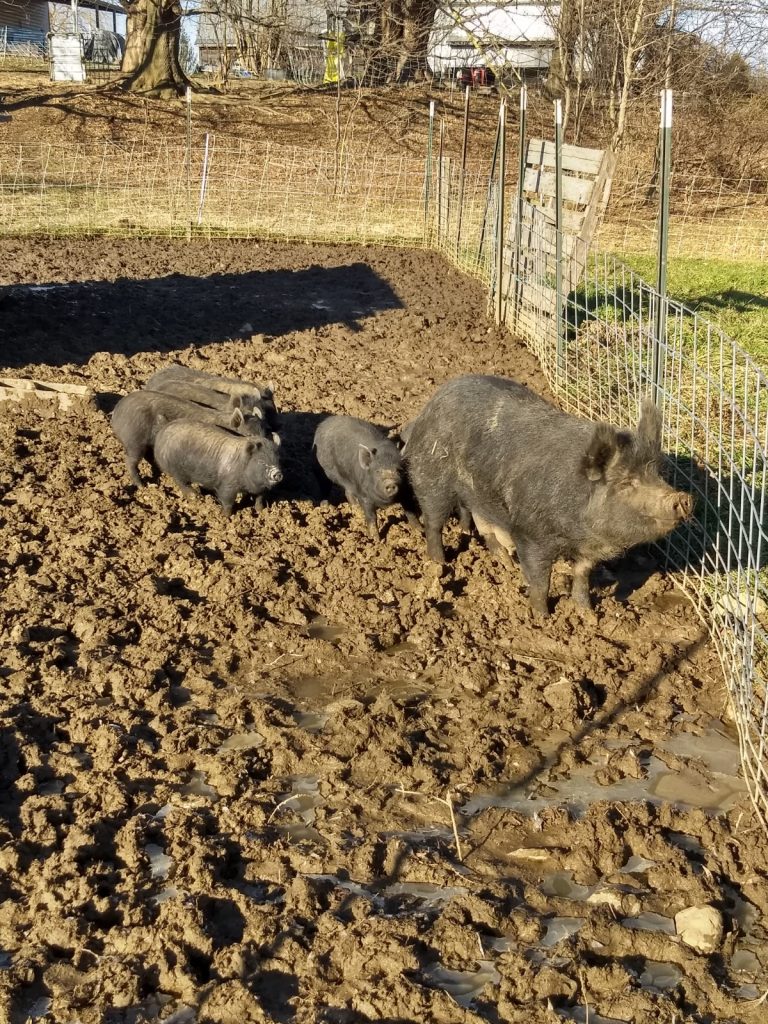It has been a very wet year, and on top of that, the early winter was unseasonably warm. Our soils don’t drain well, so our place was a muddy cesspool from November until early January. The pigs were impossible to manage, as they take moist soil and turn it into deep sucking mud in short order. The cows were kept in the barn, as their weight and hooves tear wet sod into deep mud. The sheep were also kept in the barn; even though they don’t do as much damage to the sod, they do nibble the grass too short, ultimately damaging it for next growing season and ingesting too many parasites themselves.
As we don’t have a concrete pad for the pigs, this wet year caused us to remove them from our program. We really liked the Guinea Hogs, as they were gentle, friendly pigs with delicious meat and an appetite that took care of any and all waste ‘food’ we could come up with. Any milk that went bad, skim milk, offal from slaughter, hay, grass, and more was enthusiastically utilized by the pigs. When the weather was dry, they did very little damage to the sod layer, preferring to graze the grass and only turn over an area for a wallow to cool down in. Combining the very wet year with our clay soils that don’t drain, this fall into winter was awful for the pigs. We tried moving them to new pastures regularly, but with how wet it was, they would turn it into all mud within a day. We gave them access to the compost piles, which helped them get out of the muck themselves, but it was misery for Dan to feed them as all around the pile was boot-sucking mud.

Ultimately we decided to sell or butcher all the pigs. Our freezers are full of delicious pork sausage, chops and lard, which we have been relishing, and a few new people are now experimenting with raising Guinea Hogs.
Despite all that, we have had a positive association with mud recently. We have begun using Bentonite/Montomorillonite clay as medicine. I applied ‘mud’ or clay magma to one of our cow’s udders to treat subclinical mastitis. In three days she was completely clear, and has remained clear since. We have also successfully used the clay powder internally to improve our gut health, and the clay magma externally to treat an infected sliver. We haven’t yet had other opportunities to experience the healing properties of clay, but have been convinced that that particular ‘mud’ is truly wonderful. If you would like to learn more about therapeutic clays, I recommend checking out greenclays.com.